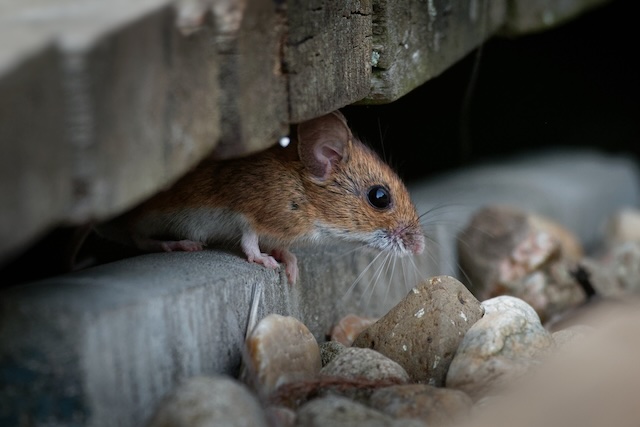Mice are very good at hiding places to live in living areas because their bodies are small and flexible. To control your mouse well, you need to know the signs and common spots of these secret havens. Let’s take a closer look at how mice build their nests and where you can find these hidden homes in your home.
1. Places that are dark and quiet:Mice are active at night and like to make their homes in dark, quiet places. Inspect places like attics, basements, and crawl spaces because mice like to hide and be alone in these places.
2. Material for insulation:Mice are very good at building things, and they often use old insulation to make new nests. Check the walls and ceilings for signs of torn or moved insulation, especially in places where people don’t go very often.
3. Things that are stored:Mouse nests are easy to hide in places that are cluttered or have things stored away. Keep an eye on storage areas like closets and garages on a regular basis. Boxes and other unused things can hide mice.
4. Areas that haven’t been disturbed:Mice like to build their nests in places that aren’t disturbed. Check behind furniture, tools, and other things that you don’t move very often. Mice may be especially interested in the warmth that electronics give off.
5. Paper and cardboard:Mice like boxes and paper because they can use them to build their nests. Keep an eye on places where you store old newspapers, wooden boxes, or other paper-based items, because mice can like to live there.
6. Things you need to build a nest:Mice gather different things to build their houses. Fabric, shredded paper, and even insulation bits can be used in this way. If you find these things lying around, it means that mice may be building a nest nearby.
7. Items that have been chewed:Looking for things that have been chewed on is a clear sign that mice have been around. When mice build their homes, they gnaw on things to keep their incisors from getting too long. Look for cardboard, cloth, or wires that have been chewed on.
8. Bring down the ceilings:People don’t always think about drop ceilings, but mice love to hide in them. The space between the structure ceiling and the drop ceiling gives mice a place to hide and build nests that is hard to find.
9. Eaves and attics:Mice love the insulation in attics and eaves because it makes great breeding material. Check these places for signs of damage, like insulation that has been torn up or droppings.
10. Behind the Appliances:Mice like to live in warm places like stoves and freezers. Check the areas behind and under these items for nesting evidence, such as torn paper and droppings.
11. Wall Void:Mice can get into holes in walls through small spaces and make nests inside. If you hear scratching or moving sounds coming from inside the walls, it could mean that mice are there. Look for gaps and take care of them right away.
12. Sinks under the counter:Mouse holes are also often found in the cabinets under sinks. These are the places you should look for eaten items, nesting materials, and droppings.
To find mouse nests in homes, you need to be very good at spotting small clues and carefully checking all possible hiding places. By finding these secret places early on, you can take steps to get rid of mouse problems and make your home safer for future visitors. Doing regular checks and keeping your space clear of clutter are important ways to make sure mice don’t hide in your home’s hidden places.
